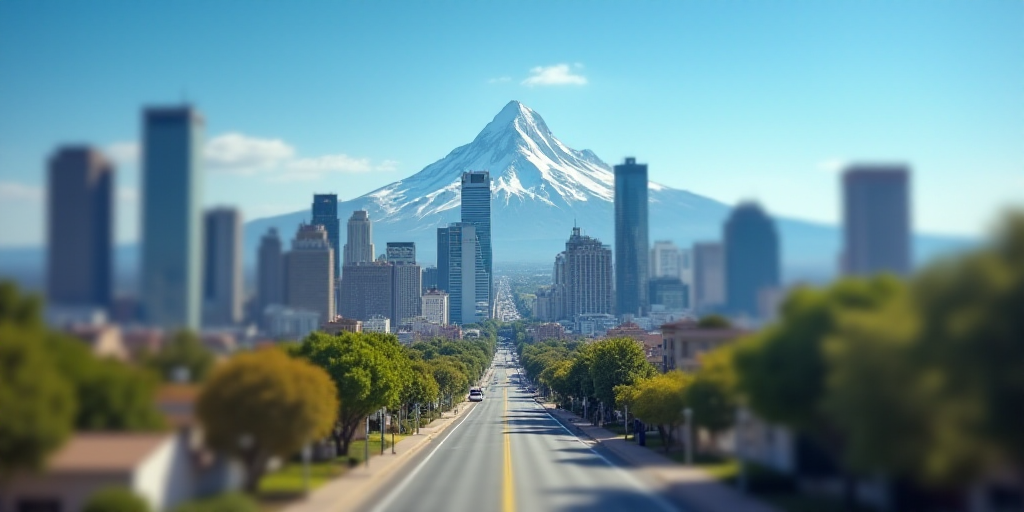The Housing Crisis and Gentrification in Mexico City
Gentrification in Mexico City has become a highly debated topic, often blamed on foreigners and platforms like Airbnb for displacing residents. However, the issue seems to have deeper roots: a structural housing crisis and policy decisions dating back over two decades.
The Roots of Displacement
According to Federico Sobrino, president of Federación Internacional de Profesiones Inmobiliarias (Fiabci) México chapter, the core problem isn’t Airbnb or foreigners but the lack of new housing in the capital.
Sobrino, a former Infonavit assemblyman, explained that since 2010, 75% of Infonavit’s capital-originating clients have exercised their credit in the State of Mexico due to the impossibility of acquiring housing within the city.
“The solution is to allow construction. There are those willing to invest, but authorization processes are closed off. This would be perfectly viable if construction capacity were delegated to local governments, but the central control and associated revenues are prioritized. This dynamic forces people to move to peripheral areas,” he said in an interview.
Rental Control Measures
The Bando 1, a strategy of 14 actions by the capital’s government, aims to curb rent increases, contain gentrification, and expand access to affordable housing. Official figures show that Mexico City has around 2.7 million housing units, insufficient for the current population, leading to six out of ten residents living in overcrowded conditions.
In certain areas, rental prices have doubled in just one year without objective justification, acknowledged Mexico City’s head of government, Clara Brugada.
Key measures in Bando 1 include creating a Reasonable Rental Price Index, identifying Housing Tension Zones, and promoting a new Rent Justice, Reasonable, and Affordable Law.
Jorge Paredes, director of Realty World, welcomes any public intervention addressing the problem but cautioned respect for private property.
“As a property owner, the goal is to increase rents at least at the inflation rate. It’s problematic if rent increases are not allowed… at minimum, ensure loss of purchasing power, which is inflation,” he pointed out.
“There should be some form of mediation when a case arises where an owner wants to increase rents above inflation. In exceptional cases, the authority should intervene as a mediator,” Paredes added.
The Legacy of Bando 2
The history of “bandos” as an urban development policy isn’t new. In 2000, newly appointed as Mexico City’s head of government, Andrés Manuel López Obrador published Bando 2, limiting new housing construction to four delegations: Cuauhtémoc, Benito Juárez, Miguel Hidalgo, and Venustiano Carranza. These areas are now the most affected by gentrification.
“Bando 2 fragmented Mexico City’s real estate market. New housing could only be built in four central delegations. Last year, rent limits were reached; now the government seeks justification to restrict the sector, with its associated problems,” Sobrino asserted.
A study by urban studies doctors María Esquivel Hernández and René Flores Arenales concludes that this strategy caused land speculation, price hikes, and a displacement process to the State of Mexico.
“Undoubtedly, the most negative effect was the formation of a city with high social segregation levels, resulting from urban and housing land speculation in central delegations where high land and housing prices have ultimately expelled poorer sectors,” the analysis reads.
Key Questions and Answers
- What is the main issue causing gentrification in Mexico City? The primary cause is a structural housing crisis and policy decisions from over two decades ago, not foreigners or platforms like Airbnb.
- How does the lack of new housing contribute to the problem? Since 2010, 75% of Infonavit’s capital-originating clients have exercised their credit in the State of Mexico due to the impossibility of acquiring housing within the city.
- What measures does Bando 1 propose to address gentrification? Bando 1 includes creating a Reasonable Rental Price Index, identifying Housing Tension Zones, and promoting a new Rent Justice, Reasonable, and Affordable Law.
- What were the consequences of Bando 2, an earlier policy? Bando 2 fragmented Mexico City’s real estate market, causing land speculation, price hikes, and displacement to the State of Mexico.






